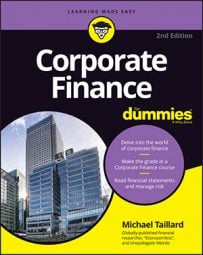Exotic financial products aren’t entirely new; rather, they’re new and/or rare variations of existing products. The word exotic is used in finance in the sense that something is attractive simply because it’s out of the ordinary. On the flip side, “ordinary” products are popular because they appeal to a larger market.
The exotic products being developed through financial engineering are rare and extraordinary in large part because they appeal to only a small market of people who not only have much more practice in financial management, but also have unique needs.
Just because an asset or investment is available doesn’t mean you need it. The attraction that people have to something that’s novel — even if they won’t benefit from having it or even if they don’t have a particular use for it — is one of those bizarre behaviors in the world of finance that causes otherwise rational, and sometimes quite experienced, people to act like excited beginners.
Still, these are great products that fill a need for a number of roles in the financial world, and even if they’re designed to fill only that role, they may inspire others to model new products off of them to fill other roles.
The point is this: Exotic doesn’t necessarily mean useful; it just means exotic.
Options
The derivatives market, which is based nearly entirely on contracts that can be customized as long as there’s a legal agreement between the issuer and the holder, has been ripe with the development of exotic financial tools.
A number of unusual options, for example, have been developed. Options are available that are dependent on some milestone occurring before the option expires but after it’s issued. Some options only become valid if the price of the underlying asset drops below a certain level, whereas others become invalidated if they drop below that level.
The same can be said for some options that either become valid or invalid if they rise above a certain level. The value of some options depends not on the final stock price on the expiration date, but, rather, on either the maximum or minimum price achieved while the option was “in play.”
The value of some options varies depending on different macroeconomic indicators, such as unemployment rates, the balance of trade, or any of a number of indicators, such as the gross domestic product (GDP).
Swaps contracts
Options aren’t the only derivative that have seen unusual variations. There are swaps contracts whose value varies not with the value of the underlying asset or even in response to variations in some indicator, but in response to the level of variation itself. Variance swaps derive their value from the amount of volatility experienced, called a variance strike.
Forward contracts are customized by their very nature (in contrast to futures, which are standardized). As a result, forward contracts can become unique to the point where you may see a particular variation only once, depending on what the two parties to the contract agree upon.
Indexed-principal swaps actually have their principal value (rather than — or in addition to — their interest payments) vary with some index, usually inflation or interest rates. Other unique swaps have included foreign exchange swaps, but they’ve come under fire as some banks have been sued for misleading claims.
Loans
The development of exotic financial products is not just limited to derivatives, though. A number of loans are becoming more exotic as well.
Some lenders are advertising interest-only loans, which have extremely low initial repayment rates because borrowers are only paying back the interest without chipping away at the principal balance. Repayment of the principal comes after a specified period of time, at which point payments increase dramatically.
Another type of loan, called a negative-amortization loan, actually requires borrowers to pay less than their interest payments at first, instead deferring those payments back into the principal loan and thereby increasing the amount they must pay back in the long run when repayment costs jump.
Loans are available with repayment costs that are variable, instead of or including a variable interest rate. This type of loan is common in many places in the world, but in the U.S. it’s pretty much limited to certain types of federally-backed student loans.

